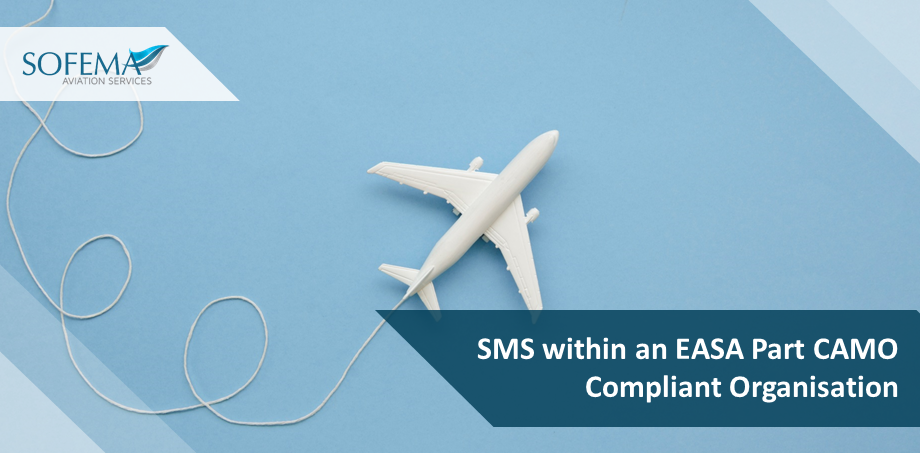Sofema Aviation Services (SAS) takes a deep dive into understanding the typical questions which we are asked by clients related to the introduction of SMS within an EASA Part CAMO-compliant organisation:
- Provide examples of aviation safety hazards entailed by the activities of an organisation, how to evaluate them and the management of associated risks.
- Provide examples of how to mitigate the risks associated with activities and verify their effectiveness;
- How should we identify, evaluate and document all management system key processes of the organisation?
- Explanation of the internal safety reporting scheme and examples
- Hazard identification and reporting
- Examples of aviation hazards that a CAMO organisation might encounter
- When EASA talks about management system key processes, can you explain what they mean
- In an EASA Part CAMO environment discuss examples for the following points:
- Safety Risk Management
- Safety Assurance
- Safety Policy and Objectives
- Safety Promotion
- Special focus on Part 2, Management System Procedure
- Practical examples of SMS in a Part CAMO Organisation
- Management of Internal Safety Reporting
- Mandatory Occurrence Reporting
- Safety Performance Monitoring
- How to use HIRA forms (Hazard Identification and Risk Assessment) in a Part CAMO Organisation – some examples for discussion
- In a small organisation where the Quality Manager also acts as the Safety Manager – how are the responsibilities best kept independent of each other
What does Sofema Aviation Services offer?
All of the above questions are answered during our 1-day webinar, in addition, provided free of is a template for an SMS Manual in word format.
Please see here
EASA Part CAMO – Safety Management Systems – Regulatory Obligations – 1 Day
From 24 September 2021, Part-M Subpart G organisation approval will no longer be available. (by this date all existing CAMO organisations must migrate to the new approval format)
What is the Difference between Part M Subpart G & Part CAMO?
Part-CAMO provides requirements for Continuing Airworthiness Management Organisation (CAMO): compared with Part-M Subpart G organisation, the main difference is the introduction of SMS principles.
Introducing SMS in EASA Part CAMO
A fully compliant Safety Management System provides a mechanism to proactively seek, identify, quantify as well as mitigate risks and potential hazards which exist in the business. Moreover, it provides for a mechanism to deliver a safer working process and environment in every facet of your day to day business activities.
This course delivers a practical pathway to implement Safety Management System (SMS) within your Part-CAMO organisation.
During the course we will consider the challenges and issues which need to be overcome and successfully addressed:
a) Gain a detailed awareness of the philosophy of safety management
b) Be able to fully engage with the needs and benefits of SMS with a Part CAMO Environment
c) Be able to deliver a continuous oversight of your organisations SMS
d) Understand Roles and Responsibilities related to the Effective Implementation of your SMS
e) Understand the impact of safety culture human and organizational factors in SMS implementation
f) Be able to acquire and manage Data within the Organisational Environment
What`s more :
Next Steps
Follow this link to our Library to find & download related documents for Free.
Please see Sofema Aviation Services (SAS) or email team@sassofia.com to discuss how you can benefit from an EASA Part CAMO SMS 1 day webinar.
Tags:
Safety Management System, Aviation regulatory training, Part CAMO, Regulatory Obligations, EASA Part CAMO Organisation, SMS for Part CAMO, SAS training, Part CAMO training





